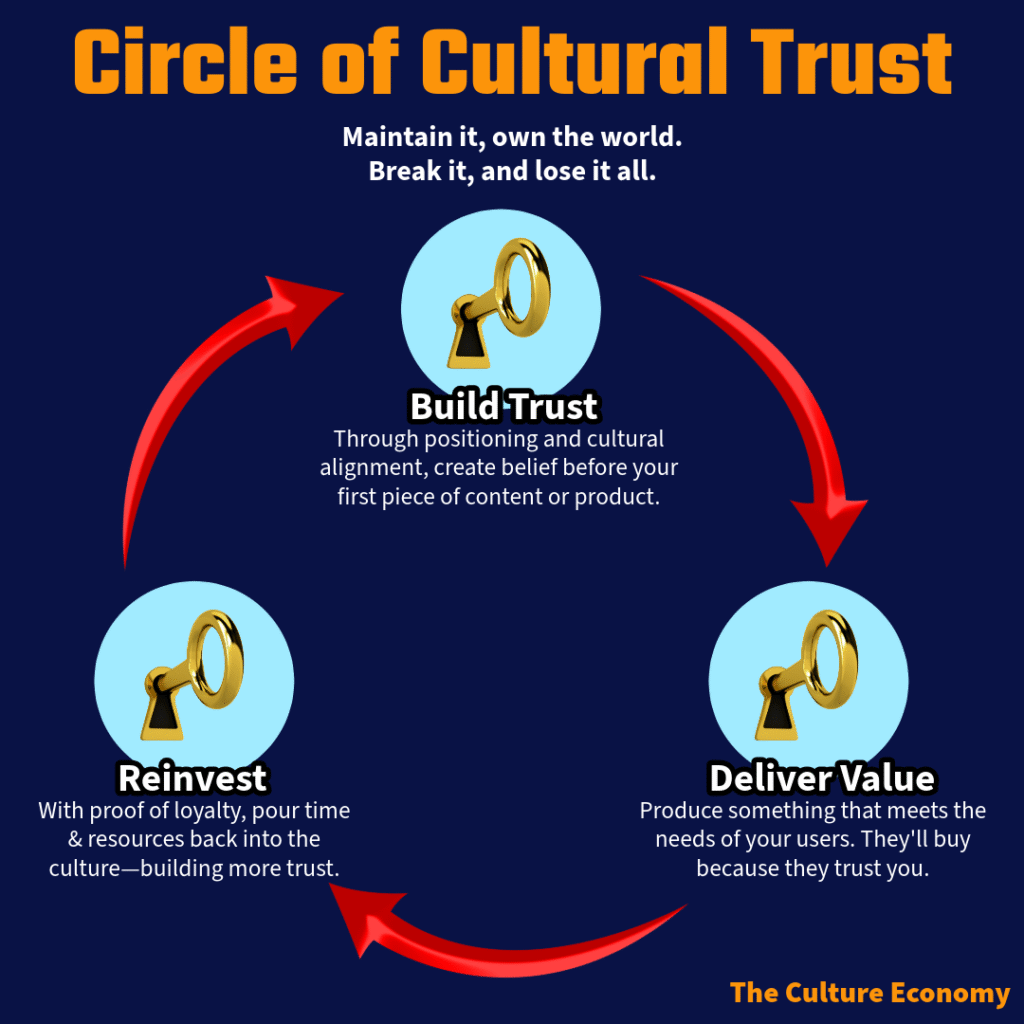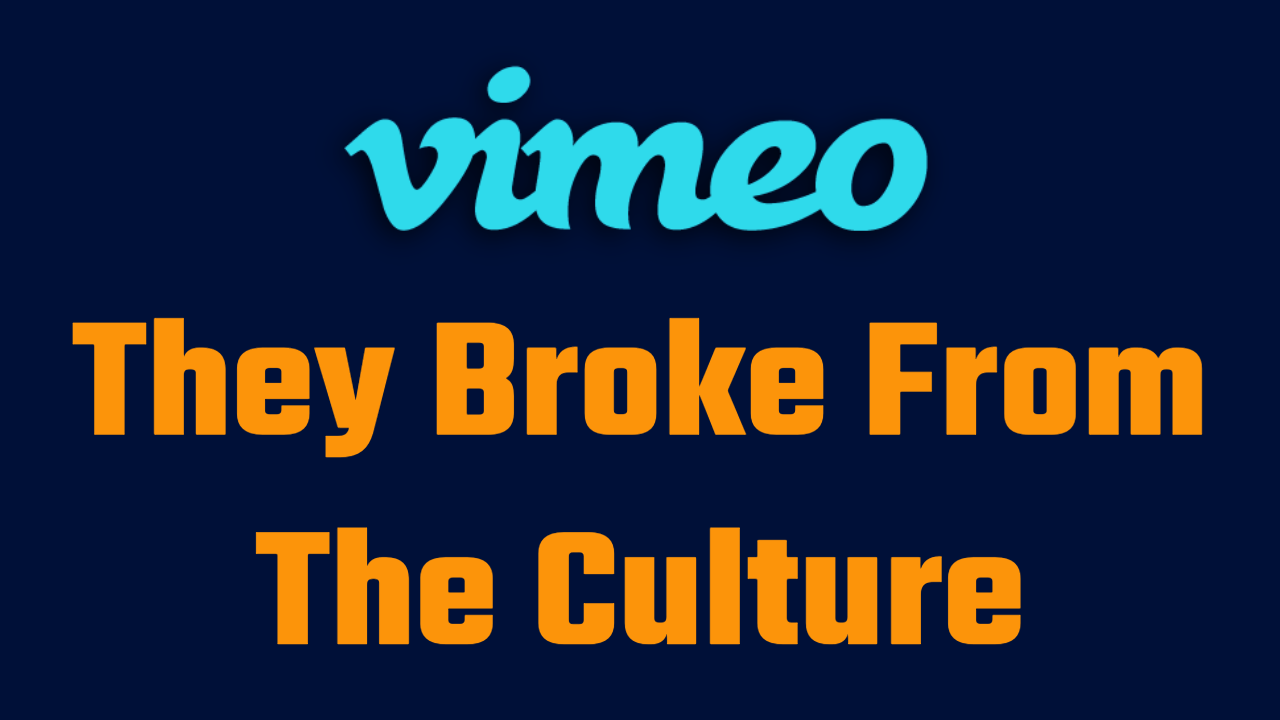There was a time when being a Vimeo Staff Pick was a filmmaker’s dream.
This week, with Vimeo’s $1.38B fire sale, that dream officially died.
But the truth is: it died long ago.
This isn’t just about one company’s failure, though. Vimeo broke something much deeper:
The Circle of Cultural Trust.
It’s one of 2 parts of what I’m calling The Culture Covenant, and every creator needs to understand it.
The Rise of Vimeo
Vimeo launched in 2004 and quickly set itself apart from YouTube by focusing on creators, not scale.
Where YouTube chased reach and ads, Vimeo built tools filmmakers care about:
- The first to offer HD playback in 2007.
- Ad-free viewing when YouTube was cluttered with pre-rolls.
- A thoughtful comment culture and customizable portfolio sites.
- An embrace of the emerging web-series boom (Broad City, Drunk History, High Maintenance).
But nothing mattered more than Vimeo Staff Picks.
Launched in 2008, Staff Picks spotlighted artistry over algorithms. Getting selected became a badge of honor—proof you belonged to a certain community of filmmakers.
It was the crown jewel of Vimeo’s identity: a trusted home for artists.
Vimeo’s Fall
But the trust didn’t last.
In 2014, Vimeo On Demand let creators sell directly to fans and keep 90% of revenue. But instead of doubling down (perhaps, competing with Patreon) Vimeo looked outward. When High Maintenance jumped from Vimeo to HBO, the company didn’t invest in building more HMs from within—it tried chasing Hollywood.
By 2016, after acquiring VHX (a platform beloved by indie creators), Vimeo announced it would repurpose it to serve “studios, agencies, and broadcasters.” Soon after, it announced plans to launch its own Netflix-style streamer, only to abandon those plans in favor of becoming a B2B video-hosting tool for enterprises.
By the time Vimeo went public in 2021, the platform that once championed filmmakers had become an enterprise SaaS company. The community that made it special was long gone.
The Circle of Cultural Trust: Explained
Through its actions, Vimeo broke the Circle of Cultural Trust. It’s a reciprocal relationship between founders and users—creators and fans—where if you scratch their back, the culture will scratch yours.
The Circle of Cultural Trust can be broken down into 3 parts:
- Build Trust → Cultural alignment and authenticity create belief in a company or creator before a product or piece of art is even delivered. Positioning, stories, titles, thumbnails, even values signal that you’re worthy of trying—of being trusted.
- Deliver Value → Once trust is built, you have to deliver something that meets the needs and desires of the culture you’re serving. If you’re doing this consistently, you’ll be rewarded with loyalty.
- Reinvest → With proof of loyalty, it’s on you to pour resources, attention, and opportunities back into your community and your culture; thereby, building even more trust with them.
And what you end up with is a self-reinforcing circle. Where trust turns into value. Value gets reinvested. Reinvestment builds more trust.
Do this well, and you strengthen the circle. Break it, and your culture collapses.

How Vimeo Broke the Circle
Having just reviewed its history, I probably don’t need to walk you through how Vimeo broke the Circle of Cultural Trust. But I’ll do it anyway—for those in the back!
- Build Trust: Vimeo’s positioning as a friend to the filmmaking community, particularly with Staff Picks, earned it early and deep trust. From the start, filmmakers trusted Vimeo more than its competition.
- Deliver Value: In its earlier years, Vimeo consistently beat YouTube to meeting the demands of filmmakers. Whereas YouTube was mostly focused on its value to viewers and advertisers, Vimeo’s core constituency was the artistic community.
- Reinvest: Vimeo was on the path to reinvestment when its initial experiment (funding new High Maintenance episodes) was launched. But the Hollywood appeal of that series being picked up by HBO drew them away. Instead of doubling down on supporting more filmmakers, they explored options that went after more users (the proposed streaming service), broadcasters (VHX acquisition), and enterprises (B2B hosting).
Effectively, instead of turning a little success into building more trust with its core community, Vimeo went outside its culture and reinvested its wins into other communities. Their Circle of Cultural Trust was broken. The culture moved on. And eventually, Vimeo faded away.
Lessons for Creators
So what should creators take away from Vimeo’s path?
- Your community is your moat. Vimeo’s strength was the trust it built with filmmakers. For creators rooted in culture—whether it’s Black culture or indie film—community is often the natural starting point, because you already live within it. In today’s economy, where the pendulum is shifting from valuing eyeballs to valuing community, don’t lose that advantage. A small, loyal community can compound into something no competitor can match.
- Trust must turn into value. Vimeo couldn’t deliver enough value to its filmmaking community to sustain itself. That’s on them. They should’ve found ways to bring value to both sides: filmmakers and the business. So listen carefully, creators: trust alone isn’t enough. You have to design offers, products, or experiences that create real value for your people—and, in turn, for you.
- Don’t break the circle. Even if your community feels too small or your revenue isn’t where you want it, don’t abandon them. Sure, pivots happen. But the best pivots narrow in on a segment of your community rather than abandoning it altogether. Once you break the circle—once you redirect your energy into a completely different audience—your old community won’t be waiting if it doesn’t work out.
In Closing
That’s the Circle of Cultural Trust. It’s the first part of what I call The Culture Covenant. Maintain the circle, and your community will ride with you for the long run.
But here’s the catch: even if you protect the circle, it’s not enough. Cultures evolve. If you don’t evolve with them, you’ll lose them.
Keeping them takes innovation. And that’s what we’ll cover in the next issue.
